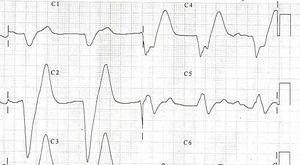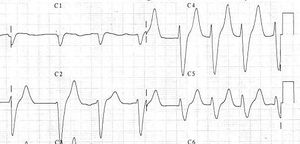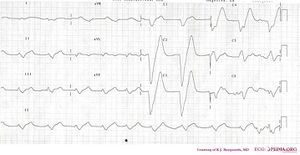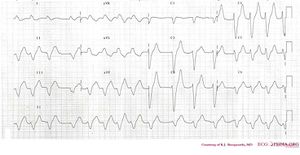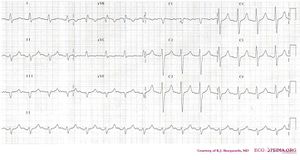Electrolyte Disorders: Difference between revisions
Jump to navigation
Jump to search
(cocaelboli) |
(dardomerlavi) |
||
| Line 1: | Line 1: | ||
reltrocelco | |||
cnamondomcn | cnamondomcn | ||
{{authors| | {{authors| | ||
Revision as of 05:14, 26 December 2007
reltrocelco cnamondomcn
| Author(s) | J.S.S.G. de Jong | |
| Moderator | T.T. Keller | |
| Supervisor | ||
| some notes about authorship | ||
Hypercalcemia
Hypercalcemia results in a faster repolarization. Characteristics of hypercalcemia:
- mild: broad based tall peaking T waves
- severe: extremely wide QRS, low R wave, disappearance of p waves, tall peaking T waves.
Hypocalcemia
ECG-characteristics of hypocalcemia:
- narrowing of the QRS complex
- reduced PR interval
- T wave flattening and inversion
- prolongation of the QT-interval
- prominent U-wave
- prolonged ST and ST-depression
Hyperkalemia
ECG characteristics of hyperkalemia:
- Tall peaked T waves
- Flattening p-waves. In extreme hyperkalemia p-waves may disappear altogether.
- Prolonged depolarization leading to QRS widening (nonspecific intraventricular conduction defect) sometimes > 0.20 seconds
At concentrations > 7.5 mmol/L atrial and ventricular fibrillation can occur.
Hypokalemia
Hypokalemia is a low blood potassium level. This results in:
- ST depression and flattening of the T wave
- Negative T waves
- A U-wave may be visible
